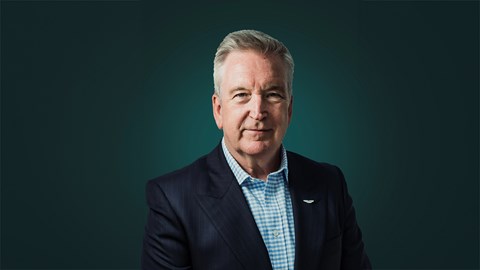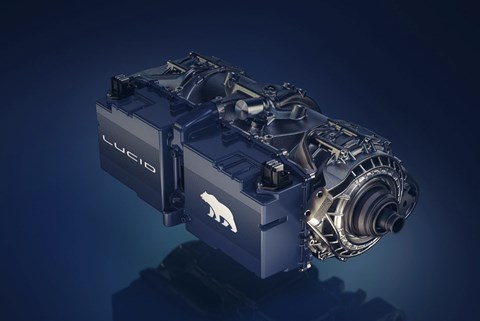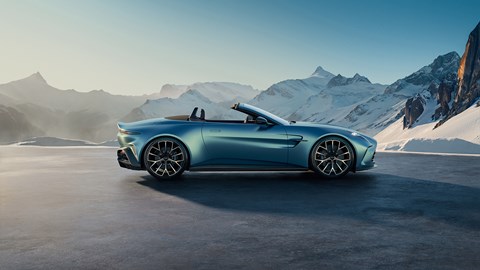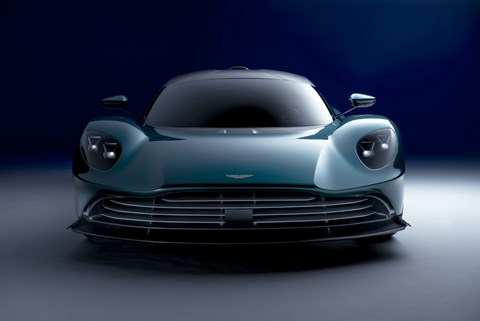► First Aston Martin EV due ‘this decade’
► Current line-up will gain hybrid versions
► Hopes that engines will be around to 2040
New boss Adrian Hallmark is clear that Aston Martin must embrace electrification, but says hybrids will be a big part of the model mix before Gaydon gives up on engines.
The election of EV-averse Donald Trump to the White House hasn’t changed anything, he revealed in an interview to update on progress since his appointment in March 2024.
‘California is still going to ban engines in 2035, as are 14 other states,’ he said. ‘While it’s not as clear-cut as it was three to five years ago, the general direction is still towards electrification.
‘To get to net zero, we will add products in the hybrid space before we get to full electric. We will have our first electric car in this decade, but we will add hybrid derivatives as well through to 2035.

‘We will be flexible and offer lots of options over the next 10 years,’ said Hallmark (above). ‘In the first half of that 10-year period, combustion engines with some form of electrification will still be the majority of our business. Beyond 2030, as people at whatever rate become more electric, up to the point of being full electric – maybe not even 2035, you never know, but ’35 to ’40 is the estimation of when the switch will occur.’
Won’t lawmakers force Aston Martin to electrify faster?
Hallmark admitted that car makers have to move fast to keep up with the shifting sands of legislation. ‘The speed of change of legislators’ mindset is incredible,’ he said. ‘We’re fully committed to BEV [battery electric vehicles]. Uncertainty from legislators is disruptive. We’ve got to protect the company. There’s no way we can go all-BEV overnight and sustain the company.
‘We’re not resisting. We’re trying to manage through a period of high risk. We can’t afford to do engines, hybrids and electric cars and just see which one’s working – every one’s got to be a winner.’
Customers have a variety of views about electric.
‘The ones who don’t want a BEV, they don’t just not want one, they hate them, with a deep-rooted passion. There’s nothing better to trigger a billionaire than the word “no”. Most of our customers are multi-millionaires or billionaires. If you tell them “no”, you can’t have a V12, no, you can’t have a V8 with 700 horsepower, they’ll really want one.’
He adds: ‘Petrolheads who would once have said PHEVs [plug-in hybrid electric vehicle] are stupid are now saying if I can’t have a full petrol car, then PHEV’s a great solution.’

For future PHEVs, the engines will come from Mercedes and the batteries from Lucid (above).
And the first fully electric Aston Martin will be…
The chief executive is not saying what the first EV will be, and says he’s still deciding whether it should get a new name (as Rolls-Royce did with Spectre) or be an EV version of a familiar model.
He admits sports cars struggle to go full electric because of the weight of batteries; the eventual arrival of solid state technology could be the tipping point.
‘I’ve driven lots of BEVs. I almost crashed one because I was laughing so much, the Hummer, It was hilarious. I’ve driven the Rivian. Anodyne, but European quality. And I’ve driven the Mercedes-AMG EQS, and that gave me hope. Without fake gearchanges or engine noises, it resonates. I don’t mean emotionally, I mean physically. By actually agitating body structures you can create emotion. And the acceleration is almost limitless.’
Before then, Hallmark’s priority is to offer customers more options, more versions of familiar cars, and more reasons to come back every couple of years for a new Aston.

‘The current portfolio is the best we’ve ever had,’ he says. The trick now is to slow down the rate of new-car launches and instead emulate rivals such as Porsche, Lamborghini, Ferrari and even Rolls-Royce, by offering customers a huge range of options and by frequently adding new variants of those cars. Hallmark notes that the Porsche 911 will be offered in around 15 flavours in a five-year period.
‘Those customers who buy a new Vantage, DB12, DBX, after two years there’s got to be a reason to buy another, better Vantage, and two years after that, another, better Vantage. We’ve never had that intensity of lifecycle innovation.
‘The competition are doing it and we’re not. We’ve never been as successful as we could be. We’ve put a lot of effort in the last few months into analysing ourselves and our competition, and developing a plan for each name plate.’
The profit to be had from options – different exhausts, audio upgrades, cosmetic changes – is ‘phenomenal’.
And he thinks there’s a lot of potential for the DBX to sell much better than it has so far.
‘DBX I still fundamentally believe in. If 52 per cent of the luxury segment is SUVs, we can’t exist without an SUV. It hasn’t yet done everything it needs to do. Through the lifecycle we can give people reasons to come back, or to come to us.

‘We want the strength we’ve got with the two-door cars, boost that exotic nature with Valhalla [above], keep that sports car/supercar/hypercar story moving nicely, but we can and will make the SUV work, because it’s a brilliant car.’